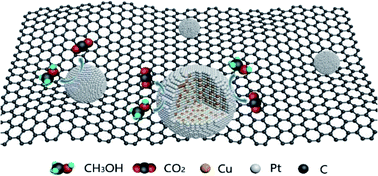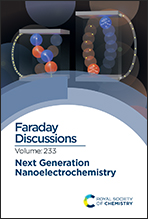Engineering PtCu nanoparticles for a highly efficient methanol electro-oxidation reaction†
Abstract
Achieving a highly efficient and durable methanol electro-oxidation catalyst in acid media is critical for the practical utilization of direct methanol fuel cells (DMFCs) at the commercial scale. Herein, we report a facile and effective one-pot strategy for the synthesis of carbon-supported PtCu alloy nanoparticles (PtCu NPs) with a Pt-rich surface, small particle size and uniform dispersion. The as-prepared PtCu NPs with the optimal alloy composition (Pt2Cu) exhibit a significantly improved electrochemical methanol oxidation reaction performance in terms of a high activity, superior CO tolerance and remarkable durability, in contrast to those of commercial Pt/C catalysts in acid media. Particularly, the Pt2Cu/C catalyst exerts a 4.5 times enhancement in the mass activity and a larger If/Ib value compared to those of commercial Pt/C (Pt/Ccomm). The enhanced catalytic activities can be ascribed to the high utilization of Pt and the high index facets of the surface. Also, the addition of Cu downshifts the d-band center of Pt and improves the CO tolerance during the methanol oxidation reaction process. This work provides an efficient strategy for designing desired Pt-based alloys for various catalytic reactions.

- This article is part of the themed collection: Next Generation Nanoelectrochemistry


 Please wait while we load your content...
Please wait while we load your content...